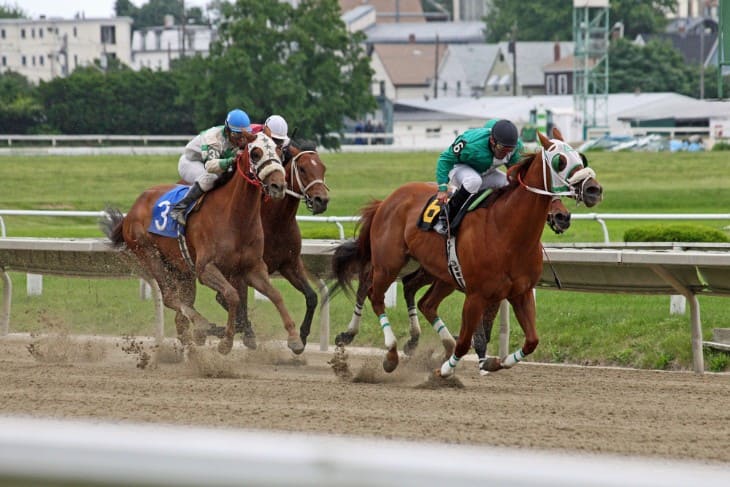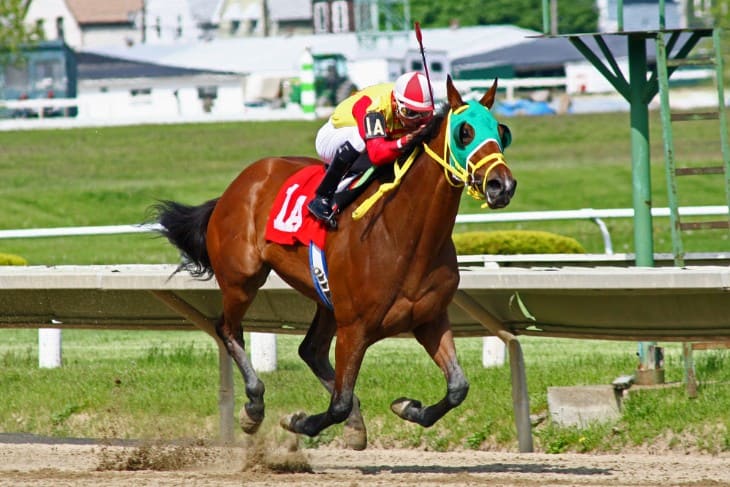- The Basics of Conditional Jockey Handicap Racing
- Understanding the Role of a Conditional Jockey
- Key Rules and Regulations in Handicap Racing
- The Impact of Handicap Weights on Race Outcomes
- Training and Development of Young Jockeys
- Strategies for Competing in Handicap Races
- Challenges Faced by Young Jockeys in Handicap Racing
- Comparing Global Handicap Racing Styles
- Conclusion
The Basics of Conditional Jockey Handicap Racing
Conditional Jockey Handicap Racing forms a significant part of the horse racing world, particularly in the United Kingdom and Ireland. At its core, this type of racing involves horses carrying different weights determined by the official handicapper. The primary objective is to level the playing field, giving each horse an equal chance of winning. The term 'conditional jockey' refers to apprentice jockeys who are typically under 26 years of age and have not yet won a specific number of races. These jockeys receive weight allowances as a means to compensate for their relative inexperience compared to more seasoned jockeys.
The allure of Conditional Jockey Handicap Racing lies in its unpredictability and the opportunities it offers for young talent. With horses assigned weights based on their past performances, the races are highly competitive. For young jockeys, these races provide a platform to showcase their skills and gain valuable experience. The weight allowance given to conditional jockeys can significantly impact race outcomes, often leading to exciting and unexpected results.
Understanding the Role of a Conditional Jockey
In the world of horse racing, the role of a conditional jockey is pivotal, especially in Conditional Jockey Handicap races. These jockeys, typically younger and less experienced, are apprentices who are still learning the intricacies of competitive racing. They are often under the mentorship of experienced trainers and are usually under 26 years old. The unique aspect of being a conditional jockey is the weight allowance they receive, which varies based on their experience and the number of races won. This allowance is a critical factor in handicap races, as it can significantly impact the outcome of a race.
Key Responsibilities:
- Navigating the racecourse effectively while managing the horse's speed and stamina.
- Making strategic decisions during the race to optimise their horse's performance.
- Maintaining peak physical fitness and weight to comply with racing requirements.
Challenges Faced:
- Balancing the need for aggressive racing tactics with safety considerations.
- Coping with the pressure of high-stakes competition at a young age.
- Building a reputation and rapport in a highly competitive environment.
Key Rules and Regulations in Handicap Racing
Handicap racing operates under a set of specific rules and regulations designed to ensure fairness and competitiveness. The fundamental principle is that each horse is assigned a weight to carry during the race, based on past performances. This weight is determined by the official handicapper and aims to equalise the abilities of the horses in the race. The more successful a horse has been, the more weight it must carry, thus giving lesser-performing horses a fair chance of winning.
For Conditional Jockey Handicap races, additional rules apply, particularly concerning the jockeys. Conditional jockeys receive weight allowances, which decrease as they gain more experience and win more races. This system promotes talent development, giving young jockeys a competitive edge. Additionally, these races have specific eligibility criteria for both horses and jockeys, ensuring that participants are appropriately matched. Safety regulations are also strictly enforced, with stringent guidelines on gear and racing conduct to protect both the horses and jockeys. These regulations are essential in maintaining the integrity and excitement of handicap racing.

The Impact of Handicap Weights on Race Outcomes
In Conditional Jockey Handicap races, the allocation of handicap weights plays a crucial role in influencing race outcomes. These weights are carefully calculated by the official handicapper, based on each horse's past performance, to level the playing field. The aim is to give every horse a fair chance to win, regardless of its previous successes or failures. This system adds a layer of strategy and unpredictability to racing, as trainers and jockeys must adapt their tactics according to the weights their horses are assigned.
The impact of these weights is profound. A well-handicapped horse can significantly improve its chances of winning, even against more naturally talented competitors. Conversely, a horse burdened with a high weight due to past successes may find it more challenging to triumph. For young jockeys, understanding how to best manage the weight their horse carries is a vital skill. It requires a deep understanding of their horse's capabilities and strategic race planning to optimise performance under varying weight conditions.
Training and Development of Young Jockeys
The training and development of young jockeys, particularly those competing in Conditional Jockey Handicap races, are critical for their success and career progression. These jockeys undergo rigorous training regimes, both physical and tactical, to hone their skills. They learn not just about riding, but also about horse care, race strategy, and the intricacies of handicap racing. This comprehensive approach is essential for preparing them to compete at the highest levels.
Key Areas of Training:
- Physical Fitness: Maintaining optimal fitness and weight is essential for jockeys. This includes regular exercise, dietary management, and weight training.
- Race Strategy: Understanding race tactics, reading the racecourse, and making split-second decisions are crucial skills for any jockey.
- Horse Management: Learning how to handle different horses, understanding their temperaments and physical capabilities, and building a rapport with them.
Development Opportunities:
- Mentorship: Many young jockeys are paired with experienced trainers or senior jockeys who provide guidance and share valuable insights.
- Race Experience: Participating in various races, including handicap races, allows jockeys to gain practical experience and build their reputations.
- Continuing Education: Workshops, courses, and seminars on topics like sports psychology, nutrition, and race regulations are often available to jockeys.
Strategies for Competing in Handicap Races
Competing successfully in Conditional Jockey Handicap races requires a combination of skill, strategy, and understanding of the unique dynamics of handicap racing. Jockeys and trainers must work closely to devise strategies that maximise the chances of winning, considering the weight the horse is carrying and the specific conditions of each race. One key strategy is the careful selection of races. This involves choosing races where the horse's assigned weight and the race conditions give it the best chance of success.
Another critical aspect is race tactics. This includes deciding on the position in the pack, whether to lead, follow, or stay within the group, and when to make the decisive move. Jockeys must also be adept at reading the race as it unfolds, adapting their strategy in response to the pace, the behaviour of other horses, and the condition of the track. These strategic decisions are often the difference between winning and losing in the highly competitive world of handicap racing.

Challenges Faced by Young Jockeys in Handicap Racing
Young jockeys, especially those involved in Conditional Jockey Handicap races, face a multitude of challenges. These challenges range from the physical demands of the sport to the mental pressures associated with competitive racing. One of the primary challenges is maintaining the required weight and physical fitness. The nature of horse racing demands that jockeys keep their weight within a narrow range, which often requires strict dieting and rigorous exercise regimes. This aspect of their career can be both physically and mentally taxing.
Another significant challenge is the mental pressure of competing in high-stakes races. Young jockeys must develop a strong mental fortitude to cope with the pressures of racing, the expectation of owners and trainers, and the intense competition they face from more experienced jockeys. Building a reputation and gaining the trust of trainers and owners is also a critical, yet often difficult, part of their career development. These challenges require not only physical strength and skill but also resilience, adaptability, and a deep understanding of the nuances of horse racing.
Comparing Global Handicap Racing Styles
The style of handicap racing, including Conditional Jockey Handicap races, varies significantly across different countries. These variations are influenced by cultural factors, racing traditions, and regulatory frameworks. In the United Kingdom, for instance, handicap racing is deeply embedded in the history of the sport, with a focus on fairness and competitiveness. The British approach often features races on turf tracks and places a strong emphasis on the skill and strategy of the jockey.
Key Differences in Global Styles:
- United States: Handicap races in the U.S. tend to have higher prize money and often take place on dirt tracks. The American style is known for its emphasis on speed.
- Australia: Australian racing features a blend of British and American styles, with a significant focus on prestigious handicap races like the Melbourne Cup.
- Japan: In Japan, handicap racing is less prevalent than graded races, but when conducted, it displays a high level of competitiveness and technological integration.
Impact on Jockeys and Horses:
- Adaptation to different track surfaces and conditions.
- Varied racing tactics and strategies according to regional styles.
- Diverse training and preparation methods to suit international races.
Conclusion
In summarising the world of Conditional Jockey Handicap racing, it is evident that this sport offers a unique blend of tradition, skill, and strategy. The role of the conditional jockey is both challenging and vital, serving as a proving ground for young talent in the competitive world of horse racing. The handicap system ensures a level playing field, making the races not only fair but also unpredictable and thrilling. The journey of a conditional jockey is filled with challenges, from maintaining physical fitness to mastering race strategies.
For more information:








